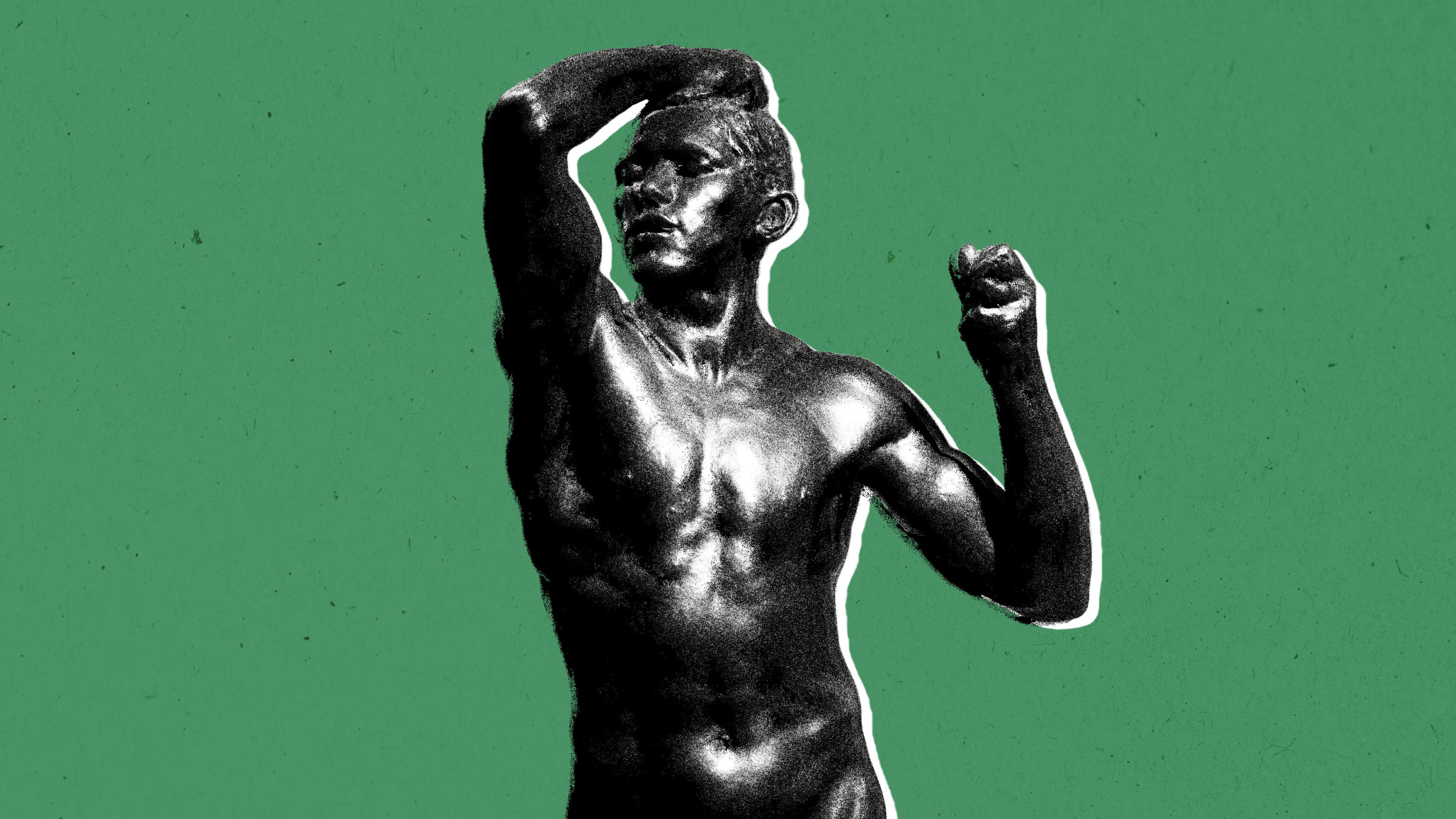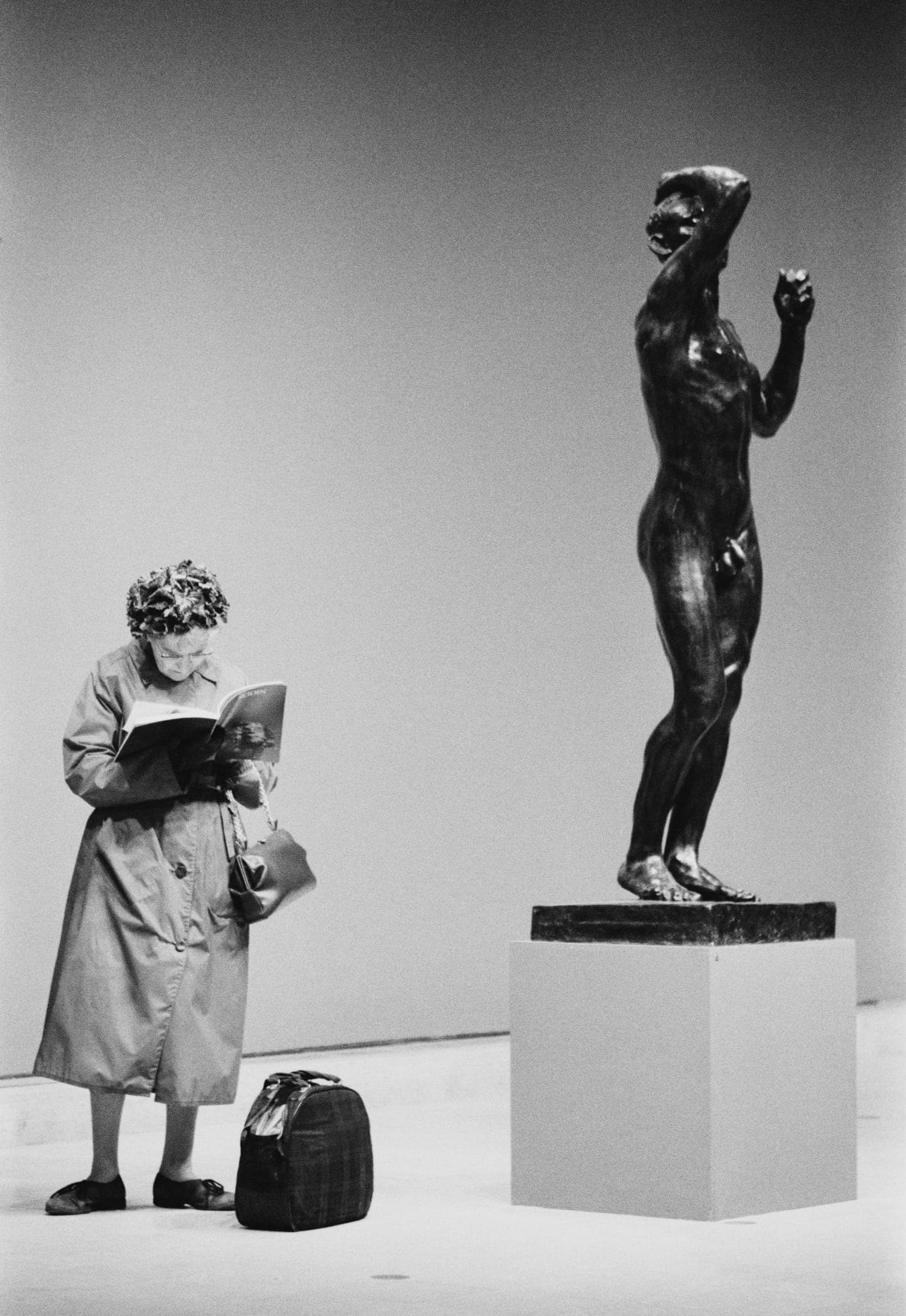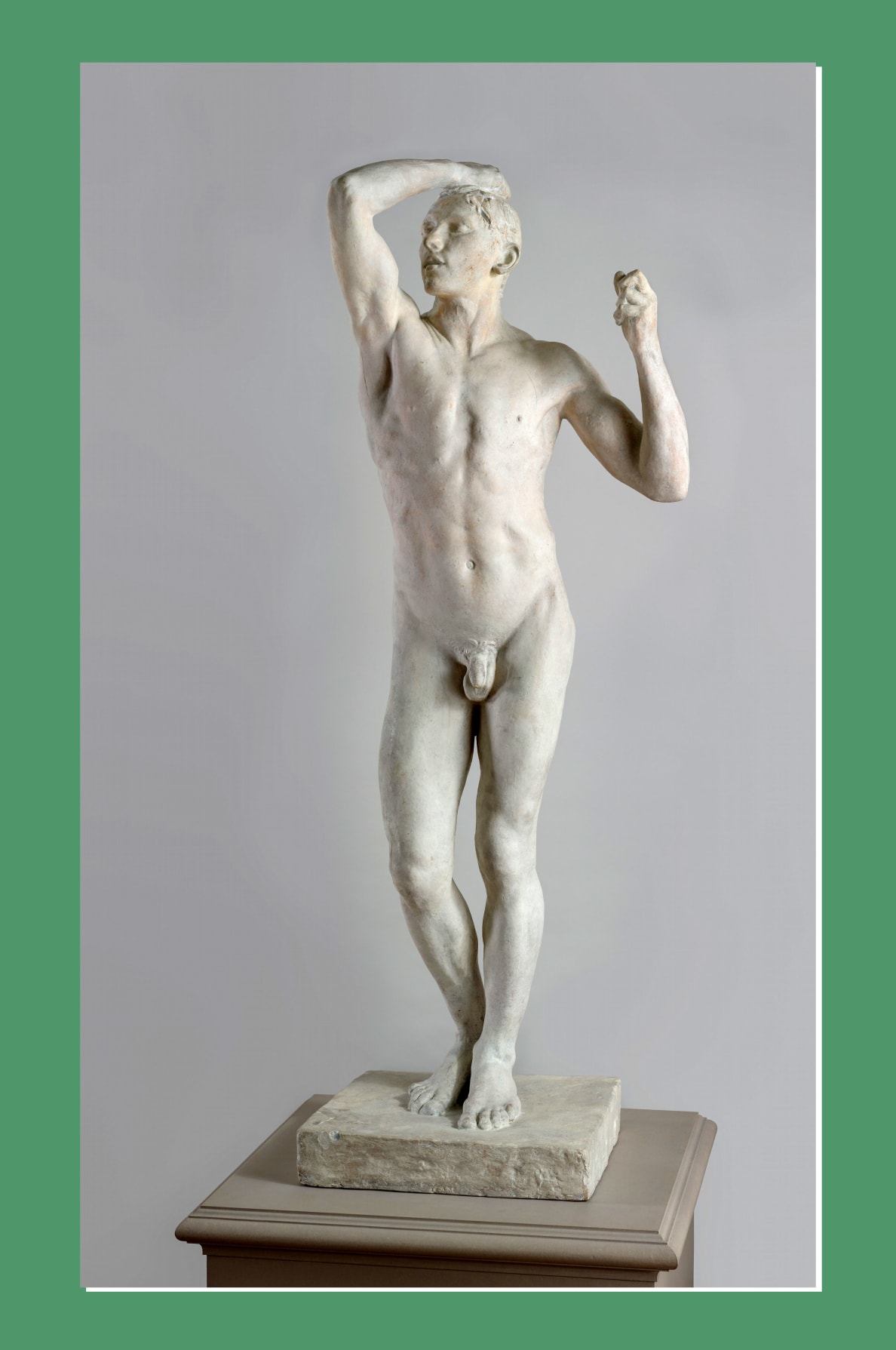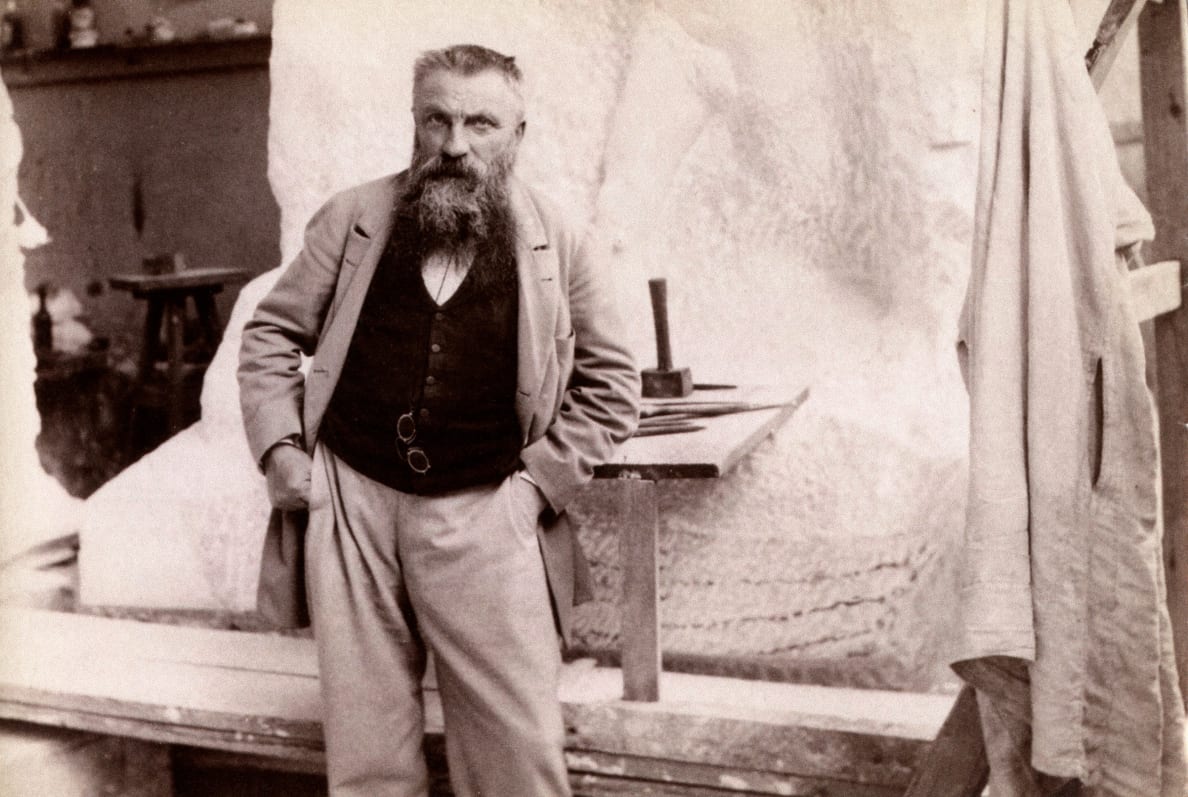Rodin, a Cadaver, and the Scandal That Nearly Derailed Him

Photo Illustration by Elizabeth Brockway/The Daily Beast/Getty
It was the sculpture that was supposed to make the once-rejected sculptor successful. But almost as soon as it was unveiled, he was faced with a shocking accusation.
PARIS—When a young soldier stripped down in a Belgian art studio in the late 19th century to model for a struggling sculptor named Auguste Rodin, neither of the men could have foreseen the uproar that the resulting masterpiece would soon unleash—echoes of which continue to resonate nearly a century and a half later.
“The sculpture of scandal” and “Rodin, a perfume of scandal” were among the headlines that appeared in the French media just a few years ago during commemorations marking a century since the artist’s passing.
The statue in question was The Age of Bronze (L'Âge d'airain), a breathtaking life-sized nude that, despite its controversial beginnings, ultimately cemented Rodin’s place in history as the father of modern sculpture.

1152593881
Evening Standard
Rodin was living in Brussels at the time, having just returned from traveling around Italy, where he was particularly moved by the works of Michelangelo. In his book, Rodin: A Biography, the late author and journalist Frederic V. Grunfeld describes the artist’s trip to Italy as “one of the great formative experiences of his life.”
“You won’t be surprised if I tell you that, from my first hour in Florence, I have been studying Michelangelo,” he wrote in a letter to his longtime partner Rose Beuret. “And I believe that the great magician is letting me in on some of his secrets…”
Rodin, who was rejected three times from Paris’ prestigious École des Beaux-Arts, would later credit the Renaissance great with “liberating me from academism” in part for his depiction of realistic, natural postures rather than artificial poses.
This focus on realism guided Rodin as he toiled in his studio over an 18-month period often in the presence of his model, 22-year-old Auguste Neyt.
“I had to train myself to strike the pose,” recalled Neyt, as quoted in Grunfeld’s book. “It was hardly an easy thing to do. Rodin did not want straining muscles; in fact, he loathed the academic ‘pose’… The master wanted ‘natural’ action taken from real life.”
The original statue sported a headband and held a spear in its left hand, both of which Rodin removed before presenting it at the Brussels Cercle Artistique in 1877. He called it Le Vaincu (the vanquished, or conquered), in reference to his home country’s embarrassing defeat in the Franco-Prussian War, but would later change the name after it provoked ire among certain critics for being anti-French.
Le Vaincu caused a stir at the exhibition, baffling artists and critics alike. Sans the spear, the figure’s left arm was now poised mysteriously in the air, and its half-closed eyes left some spectators wondering if the statue was supposed to depict a sleepwalker. And while it received praise for its beauty and originality, some critics found the figure so life-like they publicly questioned the sculptor’s methods.
A particularly damning review appeared in the daily L’Etoile Belge following the statue’s debut:
“It [the statue] will certainly not go unnoticed, for it attracts our attention by its originality and retains it by virtue of a quality that is as precious as it is rare—life. As to what role casting from life may have played in the making of this plaster we shall not examine here.”
Basically, Rodin’s creation was so realistic that he was accused of casting his work directly on the model’s body, a technique known as surmoulage. The sculptor, his detractors said, was a fraud. Some accusations apparently even took a turn for the macabre.
“They said I molded it on a cadaver that I had placed on its feet,” the French documentary La Turbulence Rodin quotes the dismayed sculptor as saying about the fiasco. “How painful to see the figure that could help my future obstructed by these slanderous suspicions!"

Said suspicions followed Rodin back to France, where he submitted the figure, now baptized The Age of Bronze, to the jury of the Paris Salon. And although the jury accepted the statue, there was chatter among members that such realism only could have been achieved via surmoulage.
Outraged, Rodin wrote to the head of the jury, who in turn asked him to provide evidence. Several of his Belgian friends and fellow artists offered written testimonies stating that they had witnessed the sculptor at work on the statue and could vouch for its authenticity. Rodin also provided photographs of Neyt that revealed him to be more robust in real life, further disproving allegations that the statue was molded directly on the body of the model.
Rodin eventually cleared his name, but the allegations had an indelible impact: The Age of Bronze was his first and last life-sized figure. Subsequent works were either scaled larger or smaller than life, something I had never really paid attention to before.
Its scandalous debut aside, today the work is among Rodin’s most celebrated. Casts of The Age of Bronze are currently displayed in the world’s major museums, including the National Gallery of Art in Washington, D.C., and Mexico City’s Museo Soumaya, as well as at the Musée d’Orsay in Paris. However, there is something particularly arresting about viewing it at the Hôtel Biron (better known as the Musée Rodin), where the artist lived and worked in the early 20th century.
Situated in the city’s posh, sedate 7th Arrondissement, the building has undergone numerous metamorphoses since it was built in the late 1720s. Originally a private mansion and gardens, it was later transformed into a Catholic boarding school for girls from wealthy families. After the closure of the school in the early 1900s, the Hôtel Biron housed ramshackle apartments and art studios rented by various Belle Epoque-era luminaries including Jean Cocteau and Isadora Duncan. In fact, it was Rodin’s good friend and secretary, the legendary poet Rainer Maria Rilke, who tipped him off to the property.
“The Hôtel Biron was in dilapidated condition and the government let it out at low rents,” Rilke wrote in his book devoted to his friend. “The plumbing was hopeless, heating no better; and in the huge, completely overgrown grounds, wild rabbits (rather appropriately) expended their natural energies without check or hindrance.”
However, in a 1908 letter to Rodin, Rilke’s description of this bohemian flophouse-cum-celebrity artist colony was far rosier:
“My dear great friend, you should see this beautiful building and the room I have occupied since this morning. Its three bay windows open expansively on to an abandoned garden, where trusting rabbits can sometimes be seen leaping through the trellises like figures in an ancient tapestry.”
Rodin rented four ground floor rooms before taking over the entire property several years later. He secured a deal with the French government to convert the space into a museum in exchange for all his works, as well as the right to remain in the property for the rest of his life. He died in 1917, and the eponymous Musée Rodin opened to the public two years later.
The 18th-century estate is an exquisite ode to Rococo style with towering arched windows, hand-carved woodwork, and interior columns. The Age of Bronze is displayed in a first-floor rotunda with ornate wood paneling and antique gilt mirrors. The best time to see it is on a sunny day when the light filters through the tall windows and illuminates its sinewy contours.
Even without the natural spotlight, the figure still stops museumgoers in their tracks. The last time I visited, on an overcast autumn afternoon, a cluster of visitors was encircling the statue, eager, it seemed, to take in every angle. I thought back to its original name, Le Vaincu. However, the closed eyes and parted lips evoke less a defeated warrior than a sigh of ecstasy. Whatever Rodin’s original vision, the resulting erotism of the piece, its powerful sensuality, is what makes it so captivating. The realism is impressive, yes, but it’s the emotion that holds our gaze.

526493634
adoc-photos
“The cast only reproduces the exterior,” Rodin explained during his defense of the statue’s authenticity. “I reproduce, besides that, the spirit which is certainly also a part of nature.”
He added:
"I accentuate the lines which best express the spiritual state that I interpret.”
As for Neyt, it appears as though he went on to lead a quiet life following his 18-month stint as a model for a master artist’s history-making sculpture. Practically nothing has been written about him apart from the role he played in Rodin’s masterpiece. Online cemetery records show a listing for an August (without the “e”) Neyt who was born in 1853 and died in 1930 in Oostwinkel, Belgium, which would put him at approximately the same age as Rodin’s model, but it’s impossible to know for certain.
While the legend of his lifelike likeness and the artist who molded it continue to burn brightly nearly a century and a half later, Neyt, like many artist models before him, has vanished unnoticed into history.
